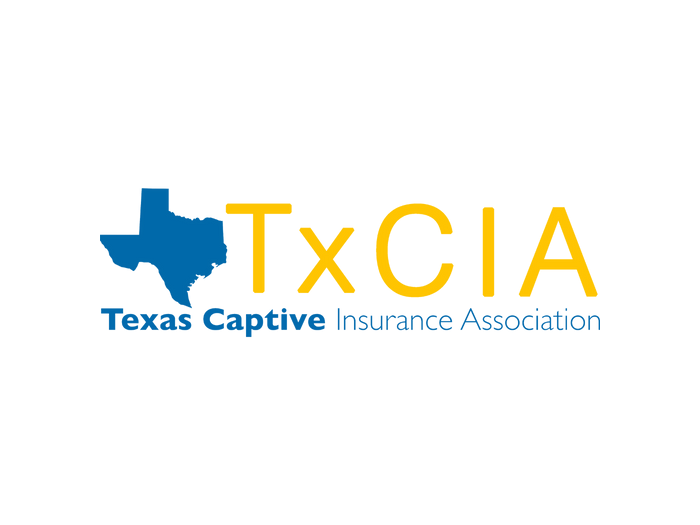Tort Reform Heats Up as States Confront Hidden Forces Behind Soaring Claims

The pattern is well documented: Insurance claims payouts have grown in the last 15 years, and the rise in costs has far outpaced economic inflation.
The Casualty Actuarial Society (CAS) found that between 2010 and 2019, commercial auto insurers paid out $20 billion more in liability claims than would otherwise have been expected. Similar, extraordinary rises have been seen across other areas of the property insurance sectors, including homeowners, personal auto and commercial multi-peril.
The chief reason for skyrocketing claims costs, according to the Insurance Information Institute (III), is legal system abuse. Last year, a joint study between III and the CAS estimated that total auto insurance claims increases between 2013 and 2023 totaled $100 billion, due to an egregious combination of economic inflation and system-exploiting legal practices that have evolved over the last 15 years.
General liability premiums, expected to double every 14 years, are now doubling every 8 to 8.5 years, said Tom Iorio, EVP of management liability and specialty at Nationwide.
“This is occurring even as businesses are trying to do their part, decreasing losses through proactive loss avoidance strategies, risk management, and more stringent safety standards. That would suggest that legal forces are to blame.”
How the Legal System (and the Insurance Industry) Gets Abused
III defines legal system abuse—a newer and more descriptive term for what was previously called “social inflation”—as “policyholder or plaintiff attorney practices that increase costs and time to settle insurance claims…legal system abuse can occur when a disputed claim could have been resolved without judicial intervention.”
“We find that legal system abuse is driven by four major areas,” said Sean Kevelighan, president and chief executive officer of III. “Plaintiff advertising of the outsized verdicts that lawyers can win their clients; fraudulent or unnecessary litigation; the erosion of caps on damages that have led to ‘nuclear verdicts’; and third party litigation funding or financing.”
III is currently working to tease out economic inflation costs from legal abuse costs in its data but Kevelighan said that it is undoubtedly a multibillion dollar problem.
“These practices weren’t really built into the pricing models of our products,” said Iorio. “As we see significant upward trends in claim severity that exceed customary normal trends beyond inflation it places upward pressure on the costs and services that are ultimately paid for by you and I.”
A Policy Problem
Plaintiff attorneys are well represented in state legislatures and are coordinated, Kevelighan said, and that has led to current legislation that promotes outsized claims and aggressive, drawn out battles with phantom medical costs.
“Plaintiff’s bar associations have been fighting to make public policy that erodes some of the caps that you would have associated with a claim,” Kevelighan said.
In recent years, third party financing of litigation through institutional investors, sovereign funds and hedge funds has only compounded the problem, transferring the financial risk of lawsuits from the plaintiff’s attorney to the investor class, with no regulatory or legal oversight for the funding stream.
“Ernst and Young looked at a projection for 2024 through 2028, and they expect direct costs from third party litigation funding to the industry to be in excess of $25 billion—possibly as much as $50 billion,” said Iorio.
At the same time, the third parties are largely unknown and hard to trace. The lack of transparency is especially concerning when sovereign funds are receiving tax and possibly national security benefits under a cloak of anonymity while degrading the legal system, Kevelighan said.
“We can only find one public company that claims itself as a third party litigation funder, “ Kevelighan said. “But third party litigation also hurts the claimant. Studies have shown that when you have a third party litigation funder behind the case, the claimant will get at least 12% less than they normally would.”
A State of Crisis and Reform Efforts
Two years ago, after Hurricane Ian hit the state of Florida, the market, already made fragile by legal system abuse, threatened to collapse, bringing the issue to a head. The governor and state legislature called for change, targeting state policies like the assignment of benefits, which allowed a claimant to sometimes unknowingly assign the claim over to a contractor or an attorney—which as a result drove claims up, sometimes by a factor of 10 or 20.
Signed by Governor Ron DeSantis in March 2023, Florida’s House Bill 837/SB 238 eliminated assignment benefits and one-way attorney fees.
“It also modified the comparative negligence on who’s responsible for the financial pieces of the claim,” said Michele Hibbert, SVP of Regulatory Compliance Management at Enlyte. “It reduced the statute of limitations from four years to two years, which limits the plaintiff’s ability to build up a case, reducing one of the biggest areas of expense which was the medical portion. The bill also limits the evidence the plaintiffs can present for past and future medical expenses.”
The effect has been decisive: Two years later, rates in Florida are flat. Some insurers have even decreased rates and 11 insurers have come back into the market. That bodes well for other states where reform is evolving, Kevelighan said.
Additional legislation in Florida, House Bill 947, is taking reform a step further to define admissible evidence in the medical expense portion of the claim including past and future damages, Hibbert said. It’s likely to pass in the coming weeks.
Enlyte, which hasn’t directly lobbied in Florida, has a lobbyist on the ground in Georgia, widely considered a staging ground for the “nuclear verdict.” Based on Florida’s law, Enlyte helped write model tort reform legislation that was the basis for the recently passed Senate Bill 68.
“We recommended that the bill cap recoverable medical expenses to the reasonable value,” Hibbert said. “That will reduce ‘phantom damages’ and restrict attorneys from suggesting specific monetary amounts for pain and suffering during the trial, encouraging negotiation to keep cases out of the court system.”
The next major targets for tort reform are South Carolina, Texas, Missouri, and Tennessee which all have efforts underway right now.
Iorio said Nationwide is advocating for disclosure of the presence of a third party litigation funding agreement.
“This legislation would establish more parity between the parties in a lawsuit, and help determine whether the funders are exercising undue influence, violating ethical rules or acting out of conflicts of interest,” he said.
At the federal level, at the urging of major companies, business groups, and Republican lawmakers, the House Judiciary Committee created a panel to study the need for a nationwide rule requiring disclosure of third party litigation funding in lawsuits.
Industry Measures
Internally, Nationwide is addressing the issue by using AI and large language models to better understand how and where legal abuse is most likely to occur.
“We are analyzing claims in the early stages, in the first 30 or 60 days, to collect fact patterns around the nature of the claim jurisdiction to better predict triggers,” Iorio said. “From our standpoint, this is about fighting these challenging trends while still allowing the legal system to offer protection to people who have been injured and wronged.”
“Because of the knowledge and expertise we have across various industries, we have a unique view of how legal system abuse is impacting all kinds of companies and ultimately the broader economy,” said Wesley Hyatt, Chief Client Officer, GRS North America, at Liberty Mutual.
“With this purview, we believe insurance plays a critical role in creating awareness about legal system abuse and encouraging broader involvement from all corners of the business community in solving the problem,” she added.
While III is not a lobbying organization, Kevelighan said it’s working to encourage collaboration in the insurance industry, and build awareness among impacted industries such as trucking and auto manufacturing. III is also working on testing messaging—for instance, calling the assignment of benefits “legalized fraud” to drive home the true impacts and spur more action.
“We provide materials to inform those that are on the ground informing policymakers. This year we put out three issue briefs, on Florida, Louisiana and Georgia,” Kevelighan said. ”We also have a microsite called StopLegalSystemAbuse.Org where you can look at state-specific facts and see, for instance, the economic impact for people in Georgia.”
Consumer Costs and Attitudes
Wider public awareness is needed as well because ultimately, it’s not just insurers who pay the cost for legal system abuse—it’s the insureds. A 2021 Perryman group study found that tort excesses cost $284.8 billion in annual direct costs including insurance premiums in the U.S. economy with a “tax” of $1,303.10 per person.
Among consumers there is some recognition of the problem—and support for legislative solutions. A 2024 survey by American Property Casualty Insurance Association (APCIA) and Munich Re US found that most Americans agree: Of the 2,000 adults who participated, 88% said they believe that “there should be full transparency and disclosure of all who have a financial stake in a civil lawsuit” and 86% agreed that “state and federal lawmakers should address abuses of the legal system.”
Nevertheless, consumer awareness remains a barrier, said Hibbert. “In every state where tort reform is being addressed, the plaintiffs’ bar brings in consumer groups with people that have been badly hurt, and that understandably tugs at the heartstrings of legislators.”
Consumers need to know that insurance carriers are not the adversary, she said. The industry should be communicating the benefits of tort reform. A good example of this is the Consumer Choice Center in Florida, which has released meaningful data in the wake of the recent legislation.
“We see that frivolous lawsuits have decreased significantly, with some reports indicating a drop of over 40% in litigation. Homeowners insurance rates have seen an average statewide reduction of 5.6%,” she said. “There needs to be more, in more places, but we are doing what we can where we can—this is a start.” &










